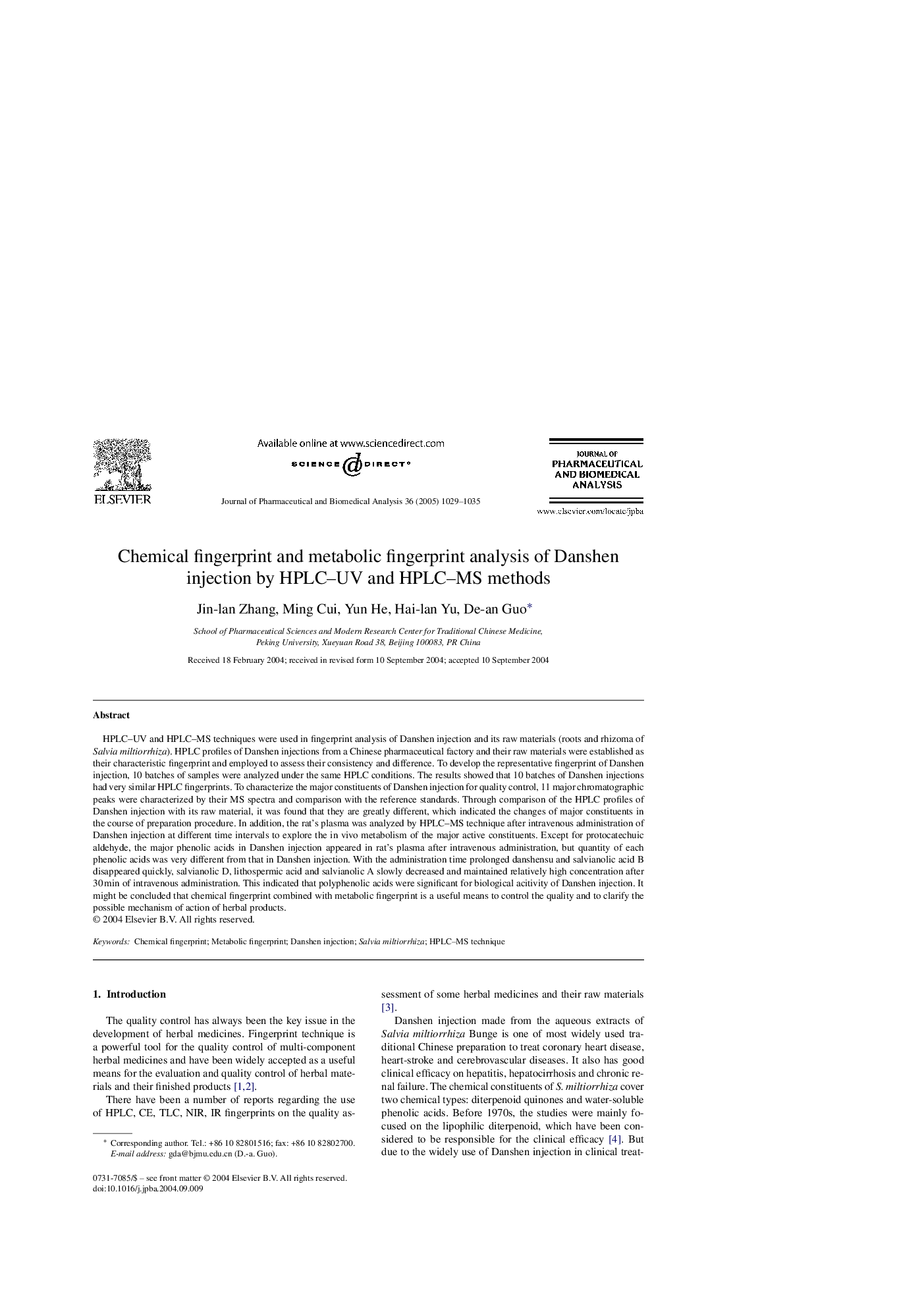| Article ID | Journal | Published Year | Pages | File Type |
|---|---|---|---|---|
| 10554103 | Journal of Pharmaceutical and Biomedical Analysis | 2005 | 7 Pages |
Abstract
HPLC-UV and HPLC-MS techniques were used in fingerprint analysis of Danshen injection and its raw materials (roots and rhizoma of Salvia miltiorrhiza). HPLC profiles of Danshen injections from a Chinese pharmaceutical factory and their raw materials were established as their characteristic fingerprint and employed to assess their consistency and difference. To develop the representative fingerprint of Danshen injection, 10 batches of samples were analyzed under the same HPLC conditions. The results showed that 10 batches of Danshen injections had very similar HPLC fingerprints. To characterize the major constituents of Danshen injection for quality control, 11 major chromatographic peaks were characterized by their MS spectra and comparison with the reference standards. Through comparison of the HPLC profiles of Danshen injection with its raw material, it was found that they are greatly different, which indicated the changes of major constituents in the course of preparation procedure. In addition, the rat's plasma was analyzed by HPLC-MS technique after intravenous administration of Danshen injection at different time intervals to explore the in vivo metabolism of the major active constituents. Except for protocatechuic aldehyde, the major phenolic acids in Danshen injection appeared in rat's plasma after intravenous administration, but quantity of each phenolic acids was very different from that in Danshen injection. With the administration time prolonged danshensu and salvianolic acid B disappeared quickly, salvianolic D, lithospermic acid and salvianolic A slowly decreased and maintained relatively high concentration after 30Â min of intravenous administration. This indicated that polyphenolic acids were significant for biological acitivity of Danshen injection. It might be concluded that chemical fingerprint combined with metabolic fingerprint is a useful means to control the quality and to clarify the possible mechanism of action of herbal products.
Related Topics
Physical Sciences and Engineering
Chemistry
Analytical Chemistry
Authors
Jin-lan Zhang, Ming Cui, Yun He, Hai-lan Yu, De-an Guo,
